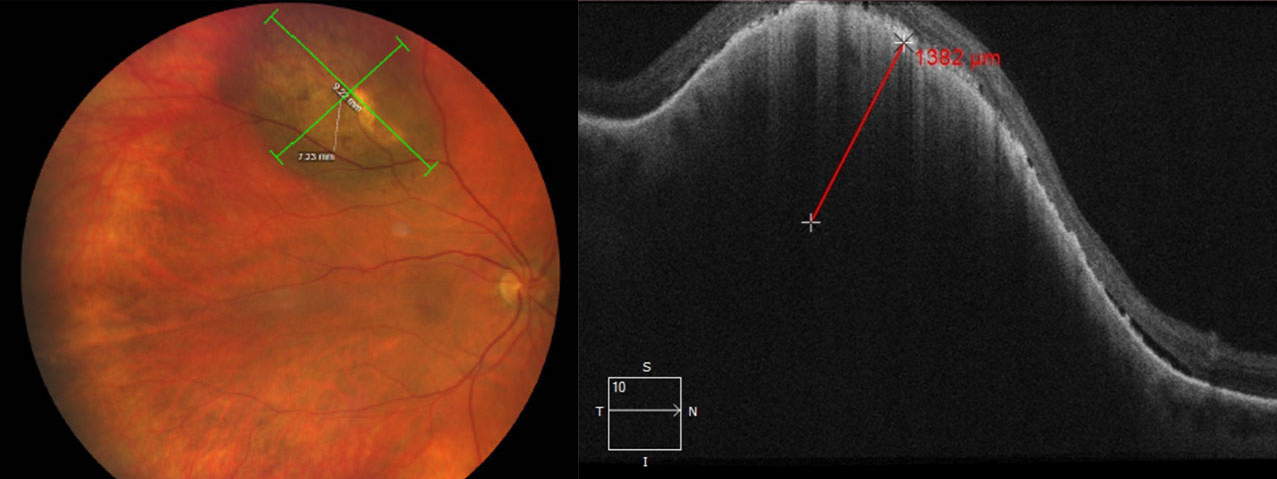 |
| Fitzpatrick Skin Type doesn’t predict melanoma outcomes across the board. For example, cutaneous melanoma outcomes vary with skin type while conjunctival melanoma outcomes don’t. Photo: Amy Bade, OD. Click image to enlarge. |
While patient race has previously been used to study uveal melanoma outcomes, skin color itself has not. Researchers assessed this association with uveal melanoma risk using Fitzpatrick Skin Types (FST). Their findings, published recently in Eye, showed that FST predicts melanoma-related metastasis.
The retrospective chart review included 854 patients with documented FST. There were 97 patients with FST type 1 (white), 665 with type II (fair), 79 with type III (average), 11 with type IV (light brown), 2 with type V (brown) and none with type VI (black).
In addition to skin type and clinical features, the researchers also analyzed genetics results. The Cancer Genome Atlas (TCGA) classifies uveal melanomas according to metastatic risk based on chromosomal abnormalities (where Group A has the lowest risk and Groups B-D have progressively increasing risk). Certain genetic aberrations are thought to have more predictive influence among patients with light-colored irises.
Comparing patient FST (type I vs. II vs. III-V) showed that there were significant differences in the following:
- Mean age at presentation (64.1 vs. 58.5 vs. 49.8 years)
- White race (100% vs. 98% vs. 75%)
- Presence of ocular melanocytosis (3% vs. 3% vs. 10%)
- Visual acuity <20/200 at presentation (6% vs. 7% vs. 13%)
- Genetic results showing TCGA group B tumors (11% vs. 14% vs. 26%)
- Genetic results showing TCGA group D tumors (22% vs. 11% vs. 9%)
- 10-year incidence of melanoma-related metastasis (25% vs. 15% vs. 14%)
- 10-year incidence of melanoma-related death (9% vs. 3% vs. 4%)
“FST I [white skin tone] patients are at increased risk for uveal melanoma metastasis and high-risk TCGA tumor cytogenic classification,” the researchers concluded in their paper. They added that patients with darker skin tone (higher FST) present at a younger age and are more likely to have lower-risk cytogenetics according to TCGA classification.
Negretti GS, Bayasi F, Goldstein S, et al. Association of Fitzpatrick Skin Type with metastatic risk from uveal melanoma in 854 consecutive patients at a single center. Eye 2023. [Epub September 28, 2023]. |

